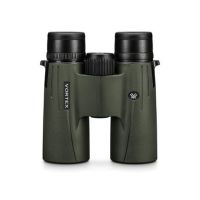
One of the best reasons to hunt public land for whitetails is for the available acreage. When it comes to public dirt, the rule is always “the more the merrier.” But having thousands of acres to hunt comes with its own challenges, the main one being the need to quickly eliminate the ground you shouldn’t hunt and focus instead on the dirt that actually holds deer.
In some regions, this can be straightforward. Take western whitetails, for example. If you’ve got a million acres of National Grassland with a single river flowing through it, your job is pretty straightforward. You know the cover that will hold whitetails (and the cover that won’t), so you can narrow your search to the river corridor and focus on finding areas where bucks live and where the hunting pressure isn’t overwhelming. In this situation, you might be dealing with only 2 or 3% of the available land, which distills the process down in a hurry.
Head to most of the rest of the whitetail’s range, and you’re not so lucky. The problem lies with the half-million acres of National Forest in the upper Midwest, the East, or throughout the South. When you’ve got vast tracts of land that could hold deer on every acre, the process of narrowing down your range is different. This is something that Michigan’s Kevin Vistisen knows well. Vistisen, who hosts the Deer Hunter Podcast, operates with a few general rules to fast-track the elimination process.
“I focus on eliminating mono-landscapes while looking for specific topographical features that allow them to use their noses,” Vistisen said. “Since deer are relatively predictable, I also look for patterns. If I find an area they like to spend time in, I’ll see that pattern repeat itself in other spots.”
Throughout this initial stage, Vistisen is quick to write off areas that show signs of heavy hunting pressure. Realistically, you accomplish this with boots-on-the-ground scouting, but hunters can easily discern mono-landscapes and topography with onX or other apps.
“I always use e-scouting to identify target areas,” Vistisen said. “Then it’s time to be aggressive and get in and confirm deer usage.” If he finds the right deer sign and thinks other hunters overlook the area, he’ll leave a camera in the spot to collect data. Vistisen often finds that deer, especially mature deer, will use specific spots from year to year. This movement, he said, is often tied to seasonality. Provided something like added hunting pressure doesn’t mess it up, trail cameras offer a reliable way to stay on current deer movement from season to season, even on the most extensive tracts of public land.
I’ve seen this seasonal movement situation play out as well, particularly in the massive chunks of public timber in northern Wisconsin. The big question I ask myself is if anyone has moved in on the deer concentrations to disrupt the year-to-year predictability of their travel. This pressure will push deer to other spots, and in my experience, it can come from people or predators.
This is the nature of the big woods game, and it can suck. Having thousands (or in some cases millions) of acres of land to hunt doesn’t suck, though. It’s where huge tracts of land offer the hard-working whitetail hunter an advantage, and it doesn’t matter if that land is in the Upper Peninsula, the mountains out east, or consists of miles and miles of patchwork timber mixed with swamps down south.
Deer junkies relegated to small properties can’t just walk a mile or two down the road and start over. They can’t have Plans A through F lined up in case one area goes cold. That’s a big advantage, but according to Vistisen, it takes the right approach and mindset.
“You’ve got to be aggressive. Be fast to pull the plug and move if it’s not happening. Be like the ice-fisherman who takes a bucket and his auger and goes to the fish, versus the guy sitting in the shanty all day waiting for something to happen.”
This is a much easier attitude to adopt if you’ve got backup spots scouted out and the option to go where your confidence is high. It’s also easier if you’re a proponent of a mobile hunting strategy and accept that things constantly change in the deer woods.
Whether those changes come from our own hunting pressure, someone else’s, a pack of wild canids, or maybe just a hard- or soft-mast food source popping up—they’re a harsh reality. How you deal with that reality matters, and while it’s not fun to watch a well-scouted area go into ghost-town mode, the good news is that you’ve got room to roam.
Take your narrowing down strategy to a new spot. E-scout those soft or hard edges and drop pins on areas where two types of cover meet. Lace-up your boots, grab a few cameras if that’s your thing, and get in there to sneak around. Or if the season is open, grab your sticks and a saddle or lightweight stand, and get in there for an observation hunt.
Either way, the goal is not to get overwhelmed by huge chunks of ground and instead break them down into manageable pieces tied to current deer activity. This might be easy in certain regions, and it might take a year-long scouting approach in others. But it’s doable anywhere, and just about every state offers huge open-to-all properties to whitetail hunters.
Just understand that you’ll need to work at it and will likely always be searching for the next deer concentration. If you’re okay with that, you might just discover that the best public land hunting happens where you’ve got enough acreage to walk all day and not hit a fence.
Feature image via Matt Hansen.









Conversation